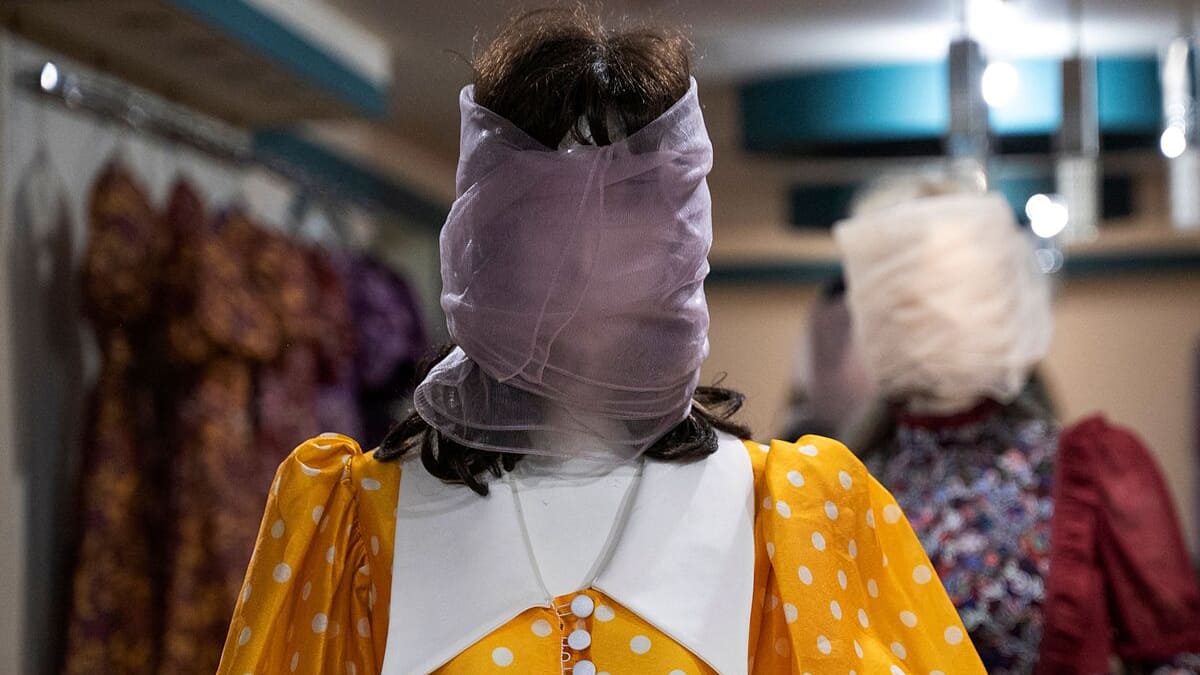
In the windows of clothes shops in Kabul, it’s a fascinating sight: the faces of models in richly embroidered wedding dresses covered with a black plastic bag or crossed with a large piece of resin.
The Taliban – who have been in power for three years – have applied a strict interpretation of Islamic law banning the reproduction of human images, not just women.
In the shops of a shopping center in the central district of Shahr-i-Naw, male models bury their faces in aluminum foil and children’s faces in plastic bags.
As soon as they recapture Kabul on August 15, 2021, the Taliban have sent a chilling message by covering faces in paint on the windows of beauty salons, barbers or billboards.
But the Ukes related to the models date back to last year, according to Kabuli traders interviewed by AFP, all of whom spoke on condition of anonymity.
One of them explains that the “Ministry of Propagation of Virtue and Vice Prevention asked” the stores to cover the models’ faces. “Environment should be Islamic.”
In his shop, his models have impossibly brown hair, an enormous mass of hair that falls over their faces and down to their mouths.
“It makes the windows look really ugly,” admits the 22-year-old businessman, but it “doesn’t affect sales.”
Farther away, a few women, wearing abayas and face masks, quietly shop as the Taliban ask.
“Cutting the Perfect Head”
Faceless models wear wedding dresses embroidered with sequins or elaborate floral designs. Interestingly, the shoulders and arms are bare and the necklines are generous.
“Then, they may order the hands to be covered in plastic,” predicts the seller.
Another shopping center in Kabul, another clothing store: Two owners explain that “vice and virtue” brigades come “three times a day” to check that the models’ faces are well covered.
In the Kart e-Nav district, they say, these moral police men are “properly decapitated” specimens.
It was in Herat, in the west, that the movement to behead models – with saws – began in January 2022. Today, the ban on faces is in effect across the Islamic Emirate from Afghanistan.
The resignation apparently led to anger. Customers aren’t shocked because “there are more serious issues,” explains one of the two owners, referring to women who are deprived of economic status or education.
Frequent inspections
In Kabul, Popalzai (not his real name) downplays the impact of these masked faces in his sprawling boutique selling jeans, polo shirts and suits.
“It doesn’t really matter to Afghans,” says the 32-year-old trader. “We’re doing it.”
“Our store was on fire, Kabul was destroyed, we lived through the worst days imaginable,” he explains, referring to past battles with the Taliban until relative safety returned.
At the entrance to his shop, male mannequins in western clothes are all veiled. One of them is wearing sunglasses.
Also, a row of mannequins, three-piece suits and sleek breast pockets, their faces covered in aluminum foil.
As for the baby mannequins, one has a head hidden in a Superman hood, another in a gold plastic bag, and a third has no head at all.
“In some places, the “substitute and virtue” tests always take place on the same days, so the sellers cover up the models’ faces,” jokes the trader.
“But here, there are three to six guys who come two or three times a week,” he says of the men, recognizable by their white coats.
The man, who experienced the Taliban’s first rule from 1996 to 2001, assures us that “they look unapproachable, they are tougher than before”.














More Stories
More than 200 former Republican aides back Kamala Harris | US Election 2024
An investigation into the ill-treatment of the Lev Tahor sect in Guatemala
Brossard is suspected by the US of supporting Russia’s war effort